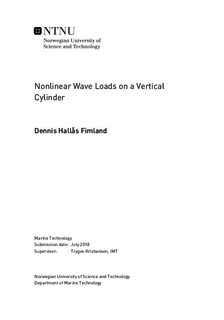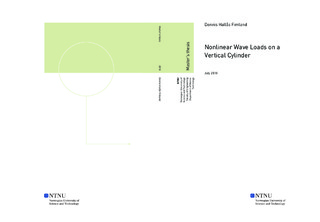| dc.description.abstract | Several authors have indicated discrepancies in the third load harmonic obtained by the inviscid FNV theory for computing higher order wave loads on vertical, non-moving, surface-piercing circular cylinders. The present master thesis investigates if these discrepancies may be explained by the occurrence of local flow separation along the cylinder axis.
The generalized FNV theory is modified to account for viscous effects, by replacing the linear forcing term with a viscous force term computed using a simplified numerical model assuming the cross-flow principle to be valid. To reduce the computational cost related to the numerical solution of the two-dimensional Navier-Stokes and continuity equations, the governing equations are restated in terms of the stream function and vorticity transport equation and solved using the mixed Eulerian-Lagrangian Vortex-In-Cell method in combination with the Operator Splitting Technique.
Computations of the horizontal wave forces acting on a circular cylinder is carried out for wave conditions where the third harmonic of the FNV theory is
known to deviate from experimental results. The computed load harmonics of the horizontal wave load are compared to estimates obtained by the generalized FNV theory and experimental measurements. Results of the three first harmonics are presented, while the main focus is on the amplitude of the third load harmonic. The computed third harmonic is shown to be in good agreement with both the FNV theory and empirical data for short waves. For longer waves the numerically predicted harmonics are in general smaller than the theoretical predictions. However, the numerical results overpredict the third harmonic for the steepest wave conditions tested compared to the experimental data. Thus flow separation alone seems not to explain the discrepancies in the FNV-model. | |

